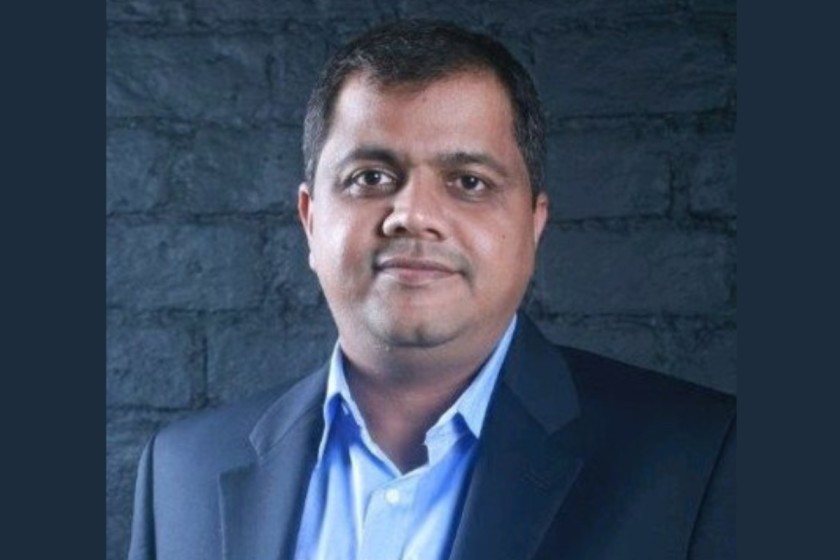- August 28, 2024
Decoding the DNA of success: Insights from Cactus Communications’ CFO Dinesh Modi

We interviewed Dinesh Modi, CFO, Cactus Communications, on strategic pricing, risk management, global partnerships, and remote workforce efficiency.
In this insightful interview with CFO India, Dinesh Modi, CFO of Cactus Communications, provides a financial lens on the company’s unique position in the global research community. He outlines their diverse revenue streams, from serving individual researchers to large pharmaceutical companies. He also discusses the company’s pricing models, its proactive approach to risk management, and how it maintains operational efficiency with a remote workforce.
This interview offers a unique CFO perspective on navigating the financial complexities of a global business serving the dynamic research sector.
Below are the edited excerpts:
Q. Cactus Communications operates in a unique space, serving the research community. Could you explain the range of your services and the spectrum of clients you cater to?
Dinesh: Cactus Communications serves a diverse research community, which includes young and established researchers, universities, academic societies, publishers, funders, and pharmaceutical and biotech companies. We serve over 100,000 clients globally each year. Our offerings include AI products designed for scientific communication – like Paperpal, an academic editing and writing tool; R Discovery, which helps researchers find relevant articles; and Mind the Graph, an online platform that allows you to create scientific illustrations – as well as expert solutions such as language editing and publication support. All our researcher solutions are accessible on one platform under Editage, our flagship brand. Our Cactus Life Sciences brand assists pharmaceutical, biotech and medical device companies with scientific communication support.
Q. Please elaborate on your pricing model. Is it subscription-based?
Dinesh: Our pricing model varies depending on the offering. For individual researchers, pricing is typically based on the number of words or the service mix they choose. For B2B, it depends on the deliverables. Our AI products are available under monthly and annual subscription packages and some have the freemium option. Since we cater to a range of consumers – students, labs, and B2B – our pricing models vary accordingly.
Q. Do you also offer advisory services to your clients?
Dinesh: Yes, we do. A researcher might seek our help in choosing the right journal or publisher, or in conducting statistical analysis. We also create media plans and help with outreach for societies and institutions. Our niche expertise in scientific communication sets us apart from media agencies.
Q. With India as a knowledge hub, how does your global workforce operate?
Dinesh: Our experts are spread across 60+ countries. We have a pool of over 4,000 freelancers globally. Our clients request services online and we distribute the work to freelancers worldwide using proprietary technology. We conduct quality checks internally before final delivery to the client. This model allows us to serve clients efficiently across different geographies.
Q. How have strategic partnerships, like those with the Society of Cell Biology and Elsevier, impacted your business?
Dinesh: Partnerships are crucial in our field. The research and publishing ecosystem is collaborative, and our partnerships with major players like Elsevier and Wiley have allowed us to expand our service offerings. These collaborations help us stay integrated in the value chain, providing comprehensive services to our clients. Over the years, we’ve expanded from basic editing services to offering full-spectrum scientific communication services and AI products, driven by the needs of our partners.
Q. What are some of the risks you’ve encountered in your role, and how do you mitigate them?
Dinesh: As an international business, we face various risks, including geopolitical, financial, and technological. Currency fluctuations, for instance, can significantly impact our revenues. We manage these risks through diversification and by adding more value to our services. AI presents both challenges and opportunities; while some low-end services might get automated, we pivot by offering higher-value services. Quality and timely delivery are non-negotiable for us. We have stringent processes to ensure that we meet client expectations, and we maintain a flexible workforce model to adapt to market changes.
Q. How has the economic decline in the US affected your business?
Dinesh: We have clients across the world, including in countries in North America, Europe, and East Asia. Economic downturns can impact our business in a particular country, but many times it gets offset by growth in other countries. Our diversified presence across geographies helps mitigate this risk, like we saw during the pandemic.
Q. Finally, how do you maintain productivity with a remote workforce?
Dinesh: Our transition to a remote-first model was smooth, thanks to our pre-COVID digital infrastructure push. We ensure a balance of online and offline interactions, with regular team meetings and cross-functional gatherings on-site. All roles are clearly defined, and we incorporate automation and straight-through processing to ensure efficiency in workflow. We are constantly keeping tabs on global trends, tweaking our processes to keep pace, and communicating changes efficiently to the workforce. This helps us to adopt global tech trends faster and it also keeps our team motivated.
